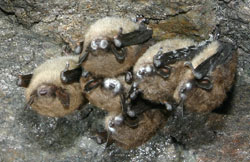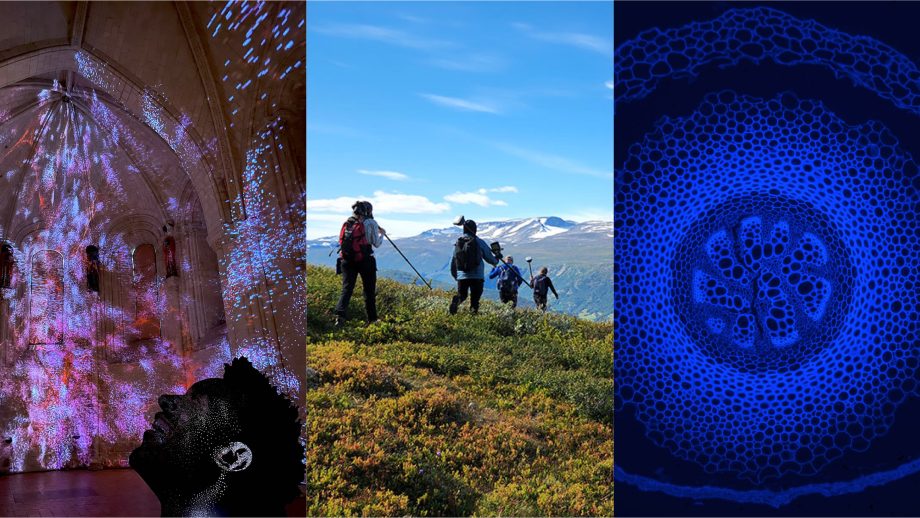 WINNIPEG, MB –A team led by the University of Winnipeg’s resident batman, wildlife biologist Dr, Craig Willis and two UWinnipeg Post-Doctoral Fellows, Dr. Lisa Warnecke and Dr. James Turner, has just published new breakthroughs on white-nose syndrome (WNS) in the prestigious journal Proceedings of the National Academy of Sciences (PNAS). The results shed important new light on how WNS has killed millions of bats in North America since 2006 and also indicates that Geomyces desctructans, the fungal pathogen responsible for the disease, is an invasive species from Europe.
WINNIPEG, MB –A team led by the University of Winnipeg’s resident batman, wildlife biologist Dr, Craig Willis and two UWinnipeg Post-Doctoral Fellows, Dr. Lisa Warnecke and Dr. James Turner, has just published new breakthroughs on white-nose syndrome (WNS) in the prestigious journal Proceedings of the National Academy of Sciences (PNAS). The results shed important new light on how WNS has killed millions of bats in North America since 2006 and also indicates that Geomyces desctructans, the fungal pathogen responsible for the disease, is an invasive species from Europe.
Although the fungus has been shown to spread by direct contact between bats and trigger certain symptoms of the disease, its causal role in mortality from the epidemic has remained unestablished. Its origin has also been a mystery, although bats in Europe also carry the fungus but without mass mortality. “There are two hypotheses to explain why so many bats have died in North America but not Europe”, explained Willis. “The fungus could be an invader from Europe where bats have evolved resistance to the disease, or the fungus could have occurred at low levels on bats from both continents for many years until a mutation or environmental change in North America made our version especially nasty for bats.”
To test these hypotheses, the UWinnipeg-led team, which included researchers from the Western College of Veterinary Medicine at the University of Saskatchewan, the U.S. Geological Survey and the Liebniz Institute for Zoo and Wildlife Research in Germany, inoculated North American bats with isolates of the fungus collected either from Europe or North America, and monitored signs of the disease for several months after infection. Whereas uninfected bats were free of symptoms, they found that both European and North American fungus triggered all known signs of white nose syndrome, including powdery white fungal growth on exposed skin and characteristic wing damage. Infected bats also warmed up from hibernation three to four times more often than uninfected bats, resulting in the depletion of precious fat reserves and ultimately, starvation. European bats largely survive these fungal infections, possibly through the evolution of immunity. Therefore, the authors suggest that accidental introduction of the fungus from Europe into North America, perhaps by tourists visiting caves, is the likely cause of white nose syndrome among North American bats.
“These results answer fundamental questions about this devastating wildlife disease and suggest that, sadly, like so many environmental problems, humans may be at fault” explained Willis. “Our findings here are helping chart new research directions that we hope can eventually assist efforts to manage the disease and protect these fantastic and ecologically important animals.”
Article #12-00374: “Inoculation of bats with European Geomyces destructans supports the novel pathogen hypothesis for the origin of white-nose syndrome,” by Lisa Warnecke et al.
Proceedings of the National Academy of Sciences of the United States of America is one of the world’s most-cited multidisciplinary scientific serials. Since its establishment in 1914, it continues to publish cutting-edge research reports, commentaries, reviews, perspectives, colloquium papers, and actions of the Academy. Coverage in PNAS spans the biological, physical, and social sciences. PNAS is published weekly in print, and daily online in PNAS Early Edition.




